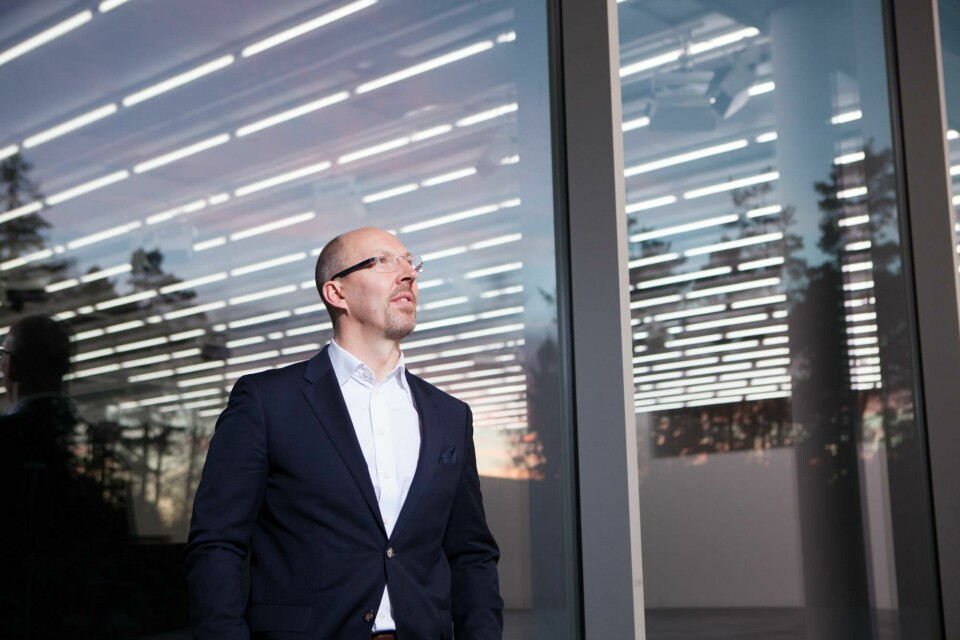
Car Design Review 4: Robin Page, Volvo
From the Car Design Review 4 yearbook: Volvo’s VP of interior design discusses the “exciting” seismic shifts electrification is causing
“The next four years for any interior designer will probably be the most exciting time since we converted from coaches to cars.”
Suddenly you see exterior designers thinking ‘I wish I was an interior designer now’. We have to start focusing not only on the driver but how we use the car, all the different modes you can go into. Really, you could start with a fresh piece of paper.

This whole movement to electrification and autonomous driving with the likes of Tesla pushing the boundaries is actually good for the rest of the industry, because it’s making the traditional CEOs and engineers and the finance and manufacturing guys think, ‘We’ve got to wake up and move quicker’.
These new start-up companies have challenges too, though. To actually build a car in volume is very hard.
The traditional brands have got to speed up and become more innovative and the new guys, who are the innovators, have got to think, ‘How do we actually deliver on our promises?’ Volvo is still small enough to be innovative and work with these other kind of brands.

In 2016 we connected with Uber. The link is more about connectivity and the devices you need for autonomous drive. A good reason why Uber came to us was design. They wanted that premium image and really liked the XC90 as a statement of safety. Because that’s absolutely key to autonomous driving, and that really is the image Volvo stands for: people, safety and design.
The whole technology world is moving much quicker than the automotive world so it’s about updates, refreshing the layout and options, but also adding apps and features to your car through your phone. We have apps where you can pre-heat your car in the morning [before you drive] and get deliveries to your car [to your boot when you’re not there].
It’s about connecting beyond the product to your life, so you continue the journey as you get into the car, with music streaming, pre-set navigation and more.

Volvo’s drive for a luxury interior has been really fulfilling. What we have been talking about for years has actually come to fruition now. We’ve managed to pull together a whole luxury statement with the 90 cluster of the XC90, S90, V90 and the V90 Cross Country.
We’ve had over 150 awards for the XC90, and now the S90 is coming back with award after award and a lot of it is focused on the interior, which is great to hear. It’s nice to know the company can deliver. It’s not just the design, it’s the quality, delivering the experience, the interface, it’s all come together.

I’m most pleased with capturing Scandinavian design in an automotive world that people define as simplicity – taking things away rather than adding things – but I know just as much as any interior designer it can fall over very quickly if your materials or execution are wrong.
If you make a beautiful, pure design and then at the last minute change to a cheap material, then it just looks like a big mass of shiny plastic. So it’s very good that the company was behind us and pushed it all the way through.

Our key interior technology has been the touchscreen because it’s enabled us to reduce the number of switches in the car, which then allows us to really pick up on that pure Scandinavian architecture. What I learned at Bentley and the VW Group is the way you treat surfaces to pull the whole design together.

I spend a lot of time with the team looking at the data and really analysing all our off-sets and gaps so that straight away you get a nice quality premium feel. Then, add in the Scandinavian materials and the kind of essence they are very good at capturing here – that cool unique look – rather than chasing the three brands from Germany, and we can have our own confident direction.

For example, Scandinavian design is about natural woods like linear walnut. Some of the markets were saying ‘that’s not what we want’. We needed to really educate people that this is modern and true to our brand values. We went through that journey. American customers are now ordering the natural linear walnut because they’ve seen it and love it.
You have to push your strong beliefs forward and eventually the markets embrace it. We still offer glossy walnut, but the volumes are radically reduced.

Thomas Ingenlath experimenting with colour and trim
It’s about matching the character and size of the car with the design. Our design director Thomas Ingenlath explained this idea of different shoes fitting different product clusters. He described the 90 as a formal, shiny, leather shoe and the 60 as more of a suede shoe that goes with a suit but also with jeans, so it’s a little more youthful. The character of our interior designs kind of captures that essence.

What we keep hold of, as we start to embrace electrification and autonomous drive, is not to lose focus of why people buy our products. The most attractive car here in Sweden is the estate car. It’s part of the weekend and also the car you use for work. It’s about designing for people and their lifestyles.

Some brands have just missed that point completely. They’re focused more on a track-day driving experience but actually a lot of car ownership is about fitting a family in the car and dealing with all the gear you move around.
Car Design Review 4 contains the best concept and production cars of the year, as chosen by the world’s leading designers, trends, student work, and much more.Available now.






